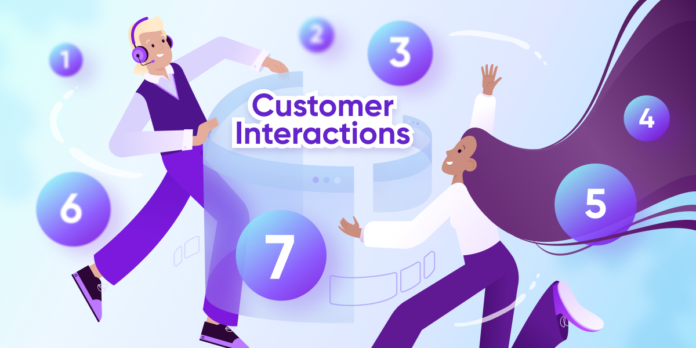7 Hidden Benefits That You May Not Be Getting Credit For
In the world of finance, the impact of your customer interaction technology choices is often greater than meets the eye. Whether you’ve chosen a ChannelLess™ interaction technology or are still on the fence, don’t overlook the multitude of benefits beyond obvious ROI that can make your success that much sweeter. In this blog, we’ll delve into seven critical areas where your customer interaction technology choice may be delivering substantial returns that don’t always get the credit they deserve.
1 – Enhanced Customer Retention and Loyalty
For financial institutions, maintaining long-term customer relationships is vital. The customer interaction technology you use plays a pivotal role in achieving this. Each positive interaction builds trust and loyalty, making each individual more likely to stay with your institution for their financial needs. This leads to a more stable base, reduced churn, and increased customer lifetime value—are you getting credit for the customers you didn’t lose?
2 – Brand Resilience and Reputation
Financial institutions rely heavily on their reputation. Being able to consistently deliver excellent service across channels, address customer concerns promptly, and demonstrate a genuine commitment to satisfaction all contribute to a strong brand reputation. In the long run, this can translate into higher trust levels, reduced reputational risks, and increased customer acquisition and conversion—benefits that are often underestimated.
3 – Data-Driven Personalization and Improvement
Today’s customer interaction technologies are more than just communication tools; they are “looking glasses” into how your consumers perceive and do business with your organization. Each interaction generates valuable data and deep insights into customer behavior, preferences, sentiments, and needs. On-screen, visual context of the consumer journey can reveal friction points to correct and opportunities for meaningful process improvements that can have a massive, yet often unrecognized impact.
4 – Operational Efficiency and Cost Savings
Equipping your representatives and managers with easy access to efficient tools to seamlessly serve consumers more effectively, raises satisfaction rates, while operational costs significantly decline. When consumers can easily find answers to their questions or resolve issues through automation, humanized virtual assistance, and proactive guided interactions your institution can allocate resources more efficiently and cost-effectively—things that your team should be duly credited for. Dig deeper: read the Driving Sales and Servicing Efficiency with ChannelLess™ Interactions white paper.
5 – Compliance and Risk Mitigation
Financial institutions operate in a highly regulated environment. The right customer interaction technology can help ensure compliance with industry standards and regulatory requirements and even help reduce fraudulent activities. Automated tracking and reporting, real-time visual observation, and automated representative assistance reduce the risk of costly compliance issues and fraud. It’s easy to overlook what doesn’t happen.
6 – Cross-Selling and Upselling Opportunities
Your customer interaction strategy isn’t just about the issues or opportunities of the moment; it can also be a powerful source of additional revenue generation. Technology-enabled interactions can uncover opportunities for cross-selling or upselling financial products and services at the right time. Behind the scenes, automated business rules can identify signs of potential interest to trigger proactive offers and engagement. Representatives empowered with context and on-screen collaboration tools can provide more efficient, personalized interactions that put consumers at ease and create a positive environment to guide them to additional products and services. These additional revenue streams don’t always receive the attention they deserve in evaluating the success of your interaction strategy.
7 – Scalability and Future-Proofing
The financial industry is dynamic, as are consumer preferences, so your chosen interaction technology should be scalable and adaptable to both current AND future needs. The right customer interaction technology can meet your institution where it is now and flexibly accommodate changing customer demands and market changes. Investing in technology that can adapt and integrate seamlessly with other systems sets the stage for long-term growth and innovation. The true return is the ability to stay competitive and agile in an ever-evolving landscape.
Putting it together
For financial services organizations selecting and maximizing the benefits of customer interaction technology is not just a matter of convenience; it’s a strategic imperative. Beyond immediate conversion and customer satisfaction, the returns of a ChannelLess interaction strategy encompass enhanced engagement, brand loyalty, data-driven personalization, operational efficiency, regulatory compliance, up-selling, and future-proofing your institution. By recognizing and fully crediting these often-overlooked returns, financial institutions can harness the true potential of their (and your) technology investments to achieve sustainable growth and success.





